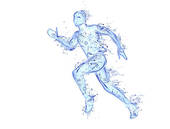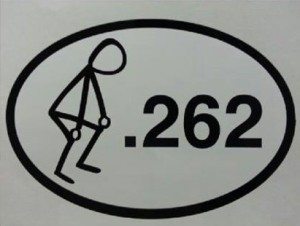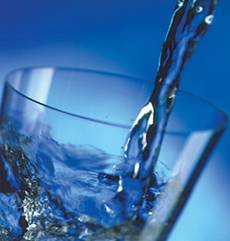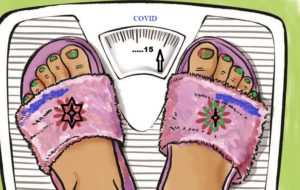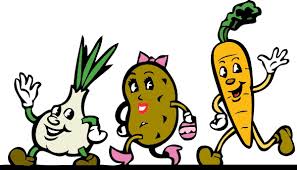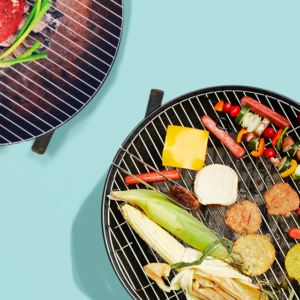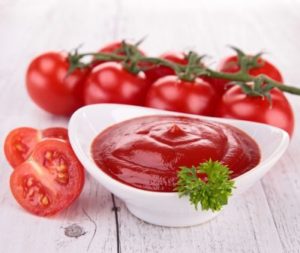Ilana Katz MS, RD, CSSD
With the Summer heat and humidity, comes the importance of refreshing hydration knowledge and deployment. Although it is important all year around, physiologically neglecting to keep up good hydration practice can result in more dire consequences in the summer months. Remember that hydration is not simply the intake of water, but strategy should include the optimal balance of electrolytes. This article is a reminder to focus on pre workout daily hydration strategies, as well as replenishing what is lost during a sweat workout, and how to recover optimally.
PHYSIOLOGY REFRESHER
Sweat during exercise is physiologically purposeful to dissipate heat, and to limit the increase in our core body temperature. Maintaining blood flow to the skin during exercise is important for the transfer of the heat generated in the body to the periphery, where it can be lost through sweating. Approximately 2% of body mass loss is typically lost through sweat and failure to replace this include a drop in blood volume and a reduction in blood flow to the skin. Even mild dehydration will decrease muscle function and the ability of the brain to stay alert and focused resulting in poor performance and increase risk of heat related dysfunction.
Sweat is mostly water and salt (and four main electrolytes which are sodium, potassium, magnesium and chloride). The more one sweats during activity, the more fluid and electrolytes that must be replaced, most particular sodium (part of salt) because it is the one most likely to be dissolved by overdrinking, or likely to attract water if under drinking, removing valuable water out of cells.
Remember that thirst is NOT a good indicator of dehydration. Thirst is driven by two key physiological changes: a rise in the concentration of sodium level and a drop in blood volume. Because part of sweat comes from blood, we lose more water molecules from the blood than we do electrolytes and therefore the saltiness of the blood rises, which stimulates thirst. However, if sweat is replaced by plain water, the plasma sodium concentration falls, which reduces thirst.
DAILY STRATEGY
Based on the physiology as described above, there is a delayed brain reaction to signal dehydration, causing thirst to lags behind.
Therefore, optimal hydration means drinking before you feel thirsty. Consume water consistently throughout the day (approx. 1 fl oz per weight in kilograms is required daily to remain in a hydrated state.) Particular to training, consume sport drinks (as they provide fluid, electrolytes and energy) before, during and after exercise. Remember, sweat rate is unique so there are no generic recommendation, but an individual sweat rate test may be useful l (sweat rate is determined by weighing before and after a bout of intensity, and using that deficit to determine your individual rate of loss.) More than a 1 to 2 % body mass loss will drastically reduce performance. More than 2% loss will increase the risk of heat related disorders such as cramping, heat exhaustion and heat stroke. More seriously, severe dehydration can quickly elevate to coma or death.
SPORTS DRINK PARTICULARS
A sports drink during exercise is best suited to give the body what it needs. It replaces the fluid as well as the electrolytes that is lost through sweating. Most uniquely designed sports drinks also provide carbohydrate that fuel the muscles and the brain during physical activity You may also notice that your sports drink of choice usually tastes good when you are hot, sweaty and thirsty (physiological signals for requirement is what makes something attractive.) The components of a sports drinks have the proper electrolyte profile to maintain the physiological drive to drink.
PRACTICAL APPLICATION
Do not underestimate your fluid needs. Exercise lasting more than 30 minutes will begin to increase core body temperatures, and even more so in the heat and humidity we are beginning to face.
To remain fully hydrated set particular goals (example):
~12 – 16 lq oz of fluid in the 60-90 minutes before activity
~4 – 6 lq oz every 15-20 min during training, even when the athletes do not feel thirsty
Replace every pound lost (in sweat rate test OR weigh before and after) with ~ 16 – 24 lq oz
And most importantly, remain consistently hydrated each and every day, over and above training hydration with approx. 1 lq oz per kilogram of body weight. [Divide your weight in pounds in half and that number is the lower end of the hydration recommendation (eg a 140 lbs = 70 lq oz as a baseline hydration strategy per day.]
